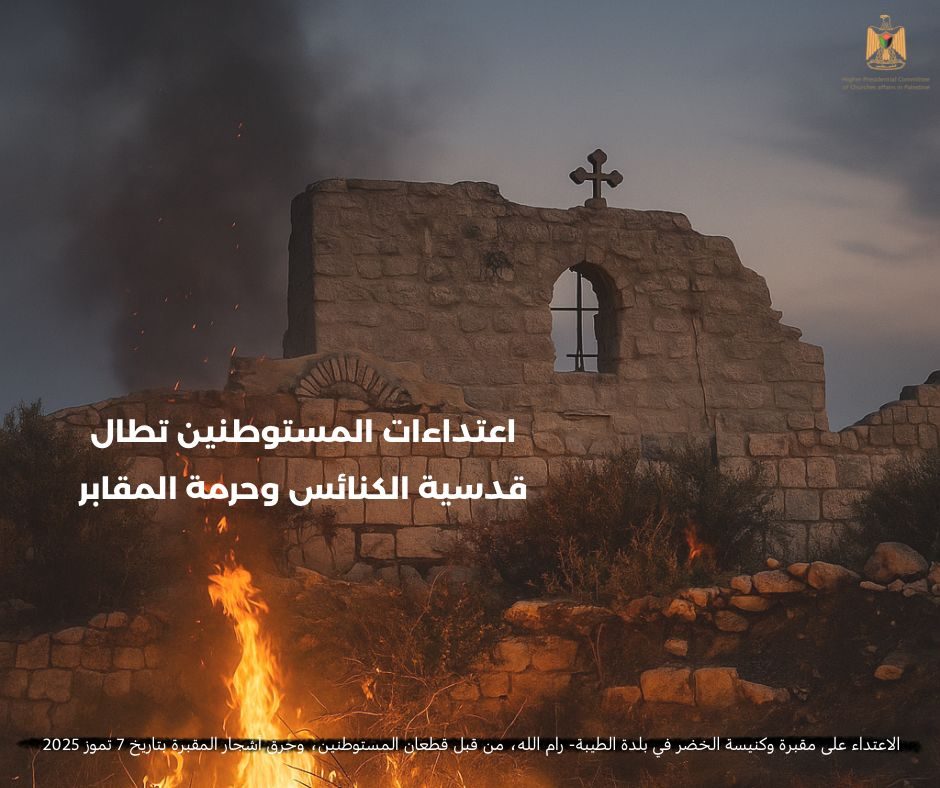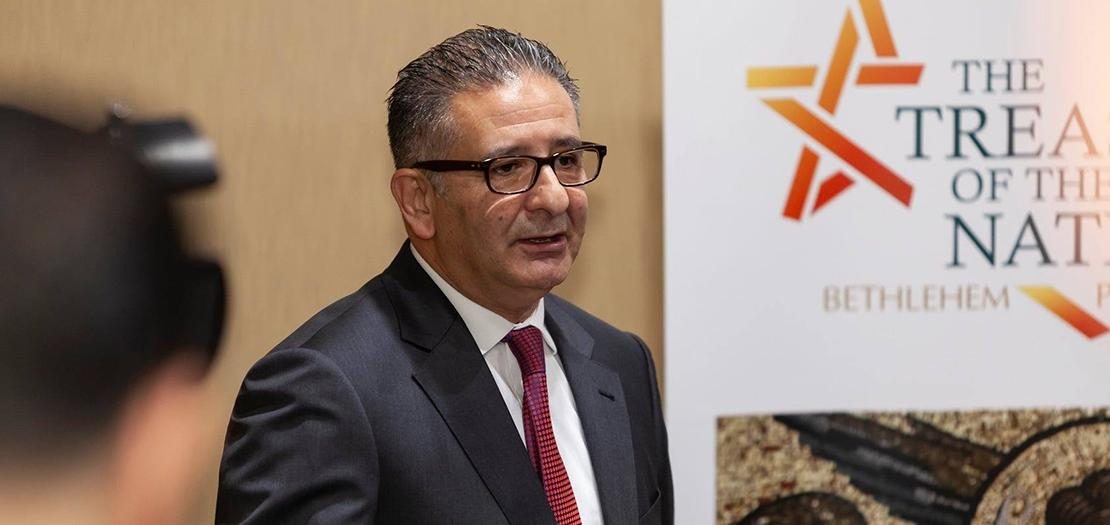The site, situated near a Palestinian refugee camp on a major route linking Bethlehem and Hebron, was purchased by right-wing activist Aryeh King three years ago, Haaretz has learned.
Part of the former church compound in the West Bank that was purchased for Jewish settlement.
Right-wing activist Aryeh King has purchased an abandoned church compound near the Aroub refugee camp between Hebron and Jerusalem, and is refurbishing it ahead of establishing a new settlement outpost at the site, Haaretz has learned. King, who specializes in buying Arab-owned real estate, purchased the property three years ago from its church owners.
Massive reconstruction of the compound, which can house 20 families, has been going on for the last few months to ready it for settlers to move in. There are several security guards on the site posing as workers. A new fence has been built, despite a stop-work injunction having been issued by the Civil Administration, since there was no building permit for the fence. None is needed for the refurbishing because the buildings, which stand at the side of Route 60, were constructed long ago, in the late 1940s.
Sources say King has not decided when to populate the compound. Even if settlers move in without coordinating the move with the army, sympathetic politicians are expected to quickly exert pressure to recognize King’s ownership of the site and allow the newcomers to remain. Such a process took place at a building in Hebron in 2007 and led to a long legal battle, with Defense Minister Moshe Ya’alon ultimately granting approval for permanent settlement of the site.
King’s purchase was kept secret and only a few people were informed, including officials in the Amana settlement movement and the head of the Gush Etzion Regional Council, Davidi Perl. People involved in the project were instructed not to inform the army about their activities there. Security at the compound was handled by private guards, without involving the army. There are numerous security cameras all around.The compound’s location is of strategic importance to settlers, since there is only one settlement, Karmei Tzur, amid numerous large Arab villages between the Etzion Bloc and Hebron. Populating the compound would enable the settler movement to consolidate its hold on the southern part of the Bloc.
It would also allow the settlers to spread out from the site, since there are over 500 dunams (125 acres) of land nearby, which was given to nearby Kibbutz Migdal Oz in 2005. On the other side of the highway are Jordanian state lands belonging to an agricultural school. The land is in use by Palestinians. but the Civil Administration did some mapping there in 2008, and plans for the area are unclear. There are also plans to build a road that bypasses the refugee camp, which would enhance access to the compound.
The site includes eight buildings, including a large central structure and several smaller ones. Over the years, a Presbyterian church operated there. Twenty years ago the church was turned into a hostel, but the business venture failed and the place was abandoned and left in ruins – although a Palestinian from the Aroub camp stayed in one of the buildings. The compound was built by Thomas Lambie, an American missionary who worked in Ethiopia before coming to Palestine in 1947. He established a hospital for people with tuberculosis at the site, on which he was buried after his death in 1954.
King declined to comment for this report.
A source in the Gush Etzion Regional Council told Haaretz that the property “is owned by the Swedish church and belongs to them; it doesn’t belong to us.”
Dror Etkes, an NGO activist who tracks the settlement project in the territories, responded to this development by saying that it will be an opportunity for Prime Minister Benjamin Netanyahu to clarify whether he is for or against a two-state solution, since this new settlement sits on a major route linking Bethlehem and Hebron and will impede any attempt to reach an agreement with the Palestinians.
“By Jonathan Lis”







